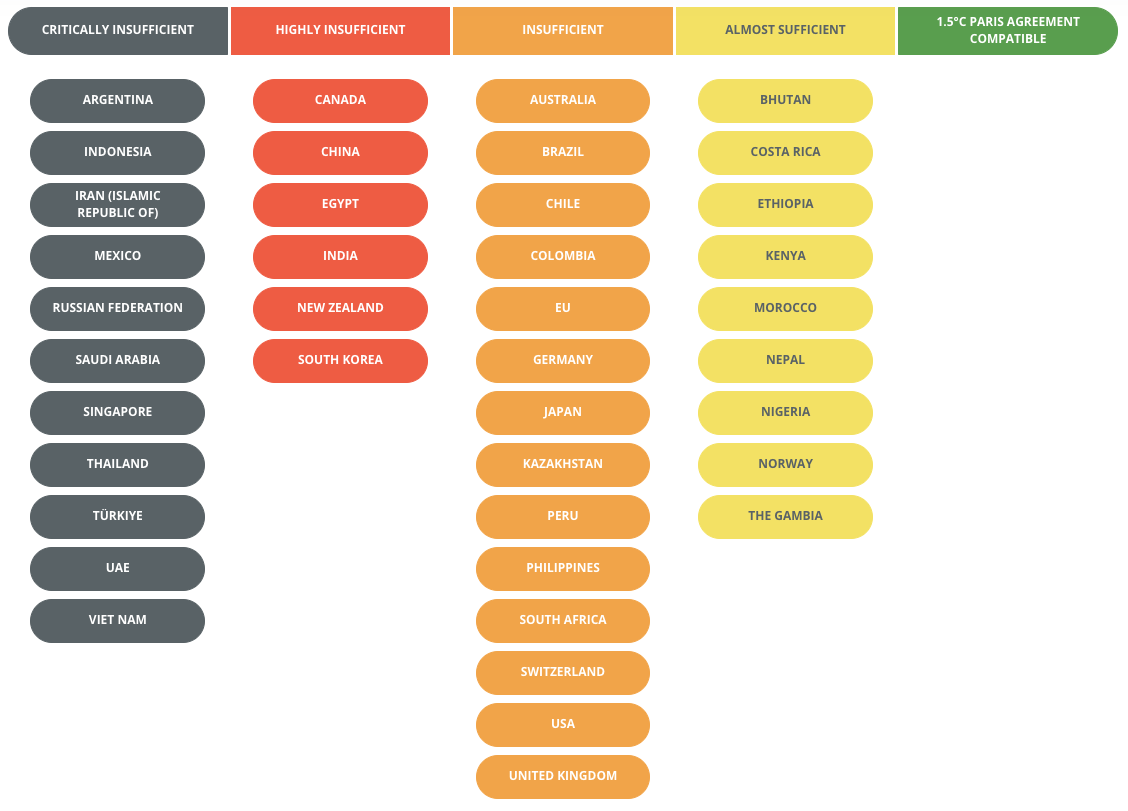Brief History and Updates Since 2015
- The Paris Agreement builds on the legacy of the Kyoto Protocol, which first established legally binding obligations for developed countries to reduce greenhouse gas emissions in December 1997. Unlike the Kyoto Protocol, the Paris Agreement involves both developed and developing countries in the climate action framework.
- Since 2015, the Paris Agreement was rapidly ratified by parties, signifying global recognition of the urgent need for climate action.
- A significant update has been the push for countries to submit more ambitious NDCs by 2023, reflecting the escalating urgency of the climate crisis.
- The Agreement introduced five-year cycles for countries to update and enhance their climate actions, ensuring ongoing progress.
How Well Have Countries Been Sticking to It?
The compliance with the Paris Agreement varies significantly among countries. Global greenhouse gas emissions have continued to rise, though there is evidence of a decoupling of emission growth from economic development in some regions.

Municipalities and the private sector have been playing crucial in driving climate action, often filling gaps in national efforts thanks to frameworks such as the IPCC and SBTi.
Future Considerations and Predictions
- The immediate focus is on countries enhancing their NDCs to align more closely with the 1.5-degree target.
- Increased support for developing nations is vital, both in terms of finance and technology transfer.
- Advancements in renewable energy, energy efficiency, and green technologies are expected to play a critical role in meeting the Agreement’s goals.
- More countries and companies are likely to set Net Zero emissions targets, aligning long-term strategies with the Paris Agreement.
.svg)